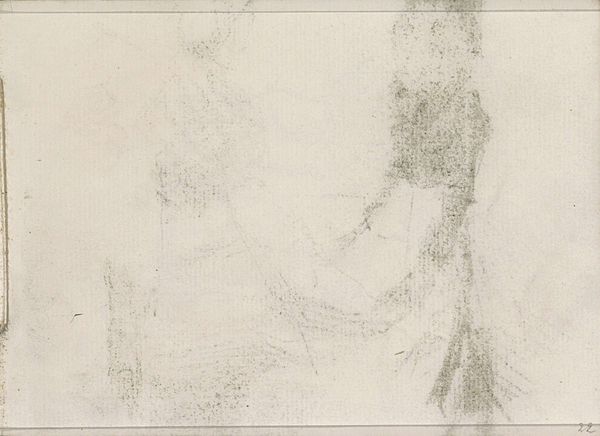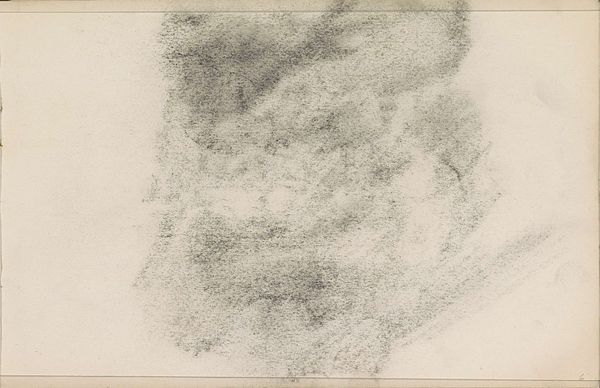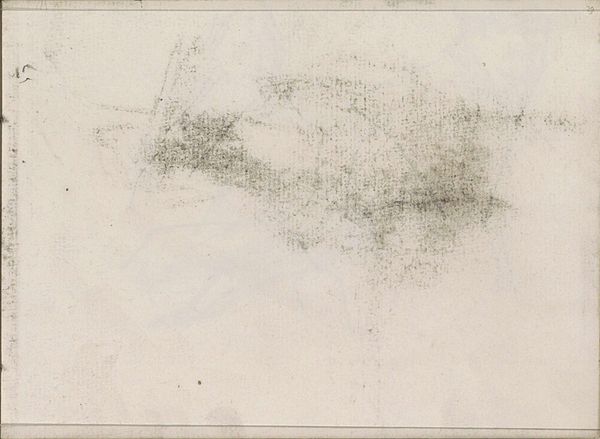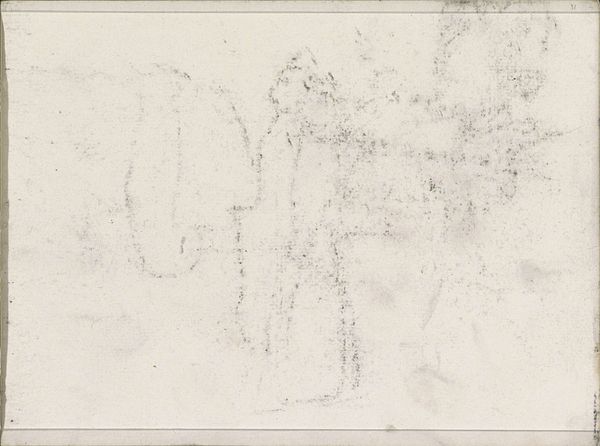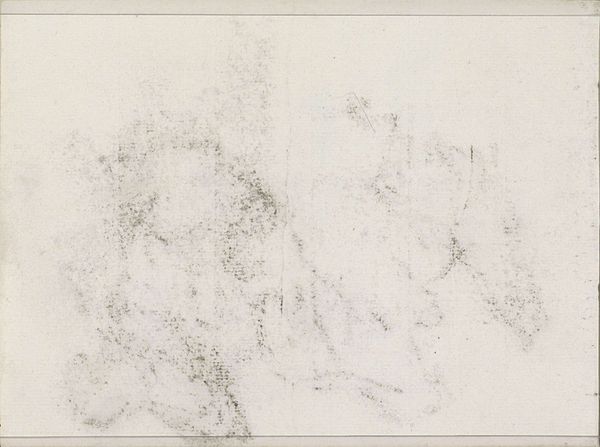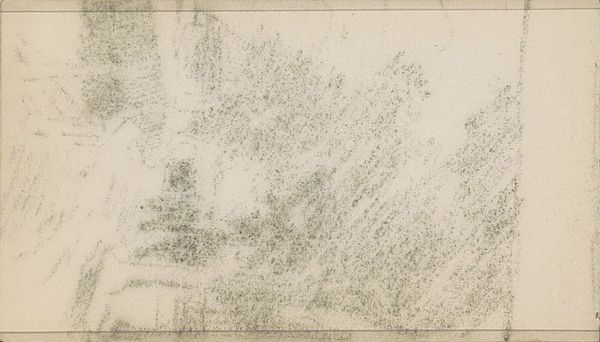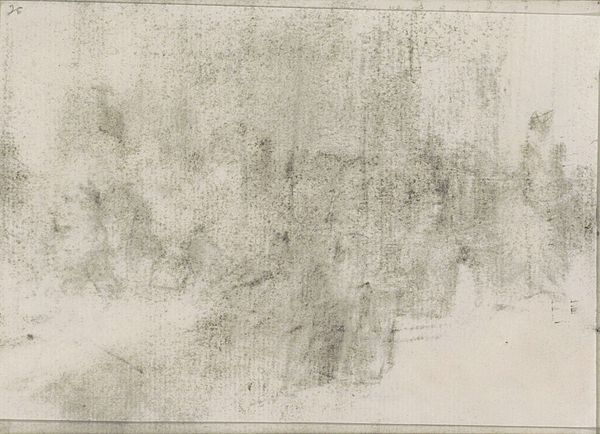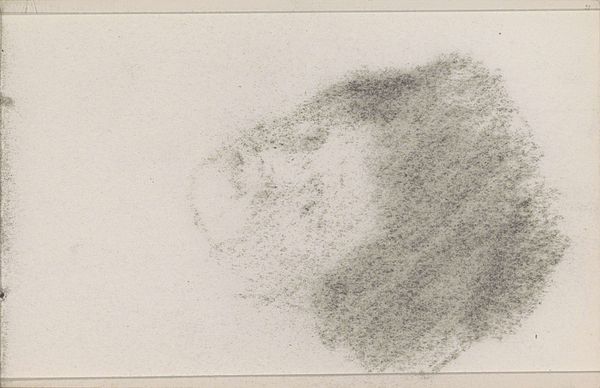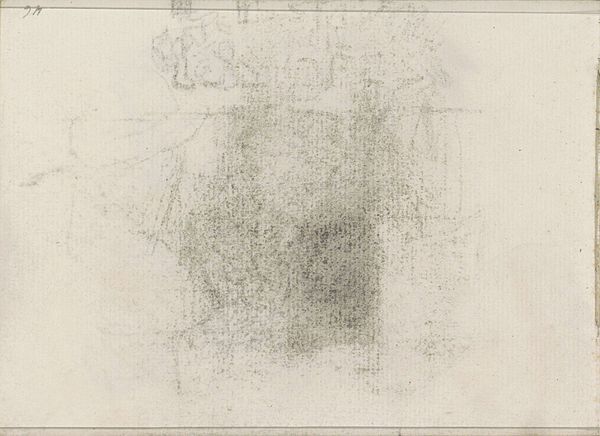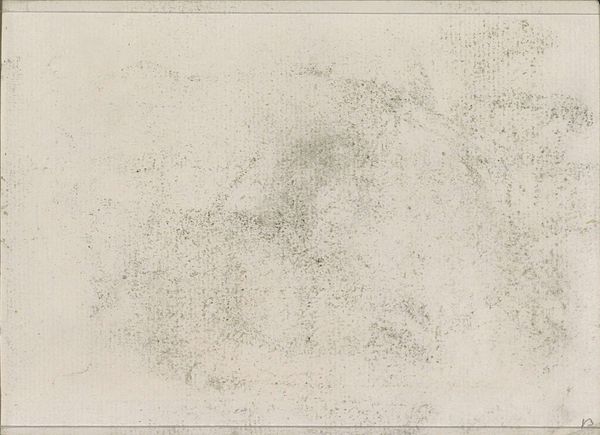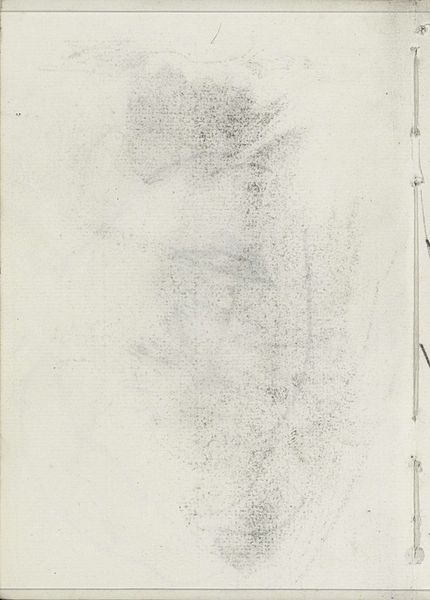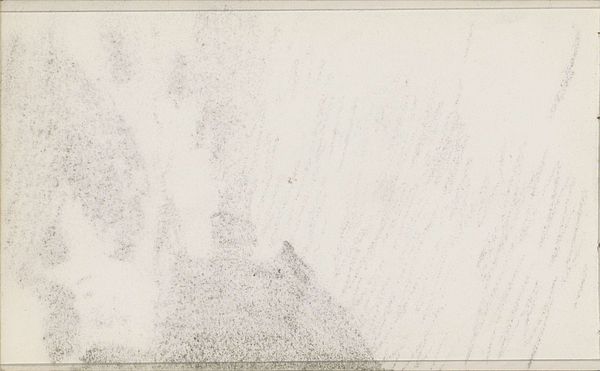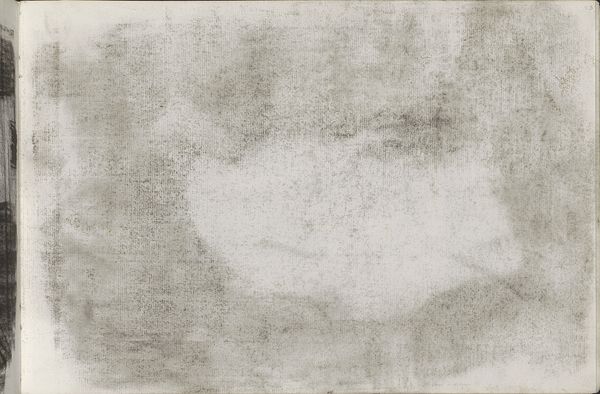
Copyright: Rijks Museum: Open Domain
Curator: Looking at Isaac Israels' pencil drawing, titled "Abklatsch van de krijttekening op pagina 9," dating from between 1886 and 1903 and housed here at the Rijksmuseum, it strikes me as…elusive. Editor: Elusive is the right word. It has an almost ghostly quality. A stark contrast between the dense left side and what appears to be only faint, lingering suggestions on the right. What emotional symbols might reside within such minimalism? Curator: Considering Israels’ social circles and the era in which this was created, one can interpret this sketch through the lens of impressionism. The incompleteness, the fleeting suggestion, could mirror the transient nature of modern life and the struggles of visibility within changing urban environments. Editor: Perhaps. The density on the left definitely conjures up feelings of oppression, a gathering storm, perhaps. And the sparseness on the right? Could it be hope struggling to emerge? What hidden iconography of the turn of the century did Israels channel into this image? Curator: Or is the lack of information, almost a kind of active visual absence, speaking more to the power dynamics at play in representations of that period? Is this work implicitly interrogating what gets seen and what remains purposefully obscured by those in power? Editor: Certainly, it speaks to the idea of seeing and not-seeing. But beyond social commentary, is there something more universal happening here? The left side suggests enclosure, and I see echoes of historical marginalisation. This is visual rhetoric about who is centered and who is exiled to the edge, isn't it? Curator: Absolutely. This work serves as a palimpsest; the traces of a previous image linger, partially erased. It reflects anxieties about fleeting social hierarchies. Editor: Looking closely, the drawing, if we can even call it that, suggests that we need to look beneath the surface and understand what kind of memory culture has left on it. Curator: In some ways it asks, 'Whose stories were told, and whose remained unspoken or obscured?’ Editor: Leaving us with something beautiful, really; it provides such food for contemplation! Curator: Yes, it urges a richer and complex perspective.
Comments
No comments
Be the first to comment and join the conversation on the ultimate creative platform.
